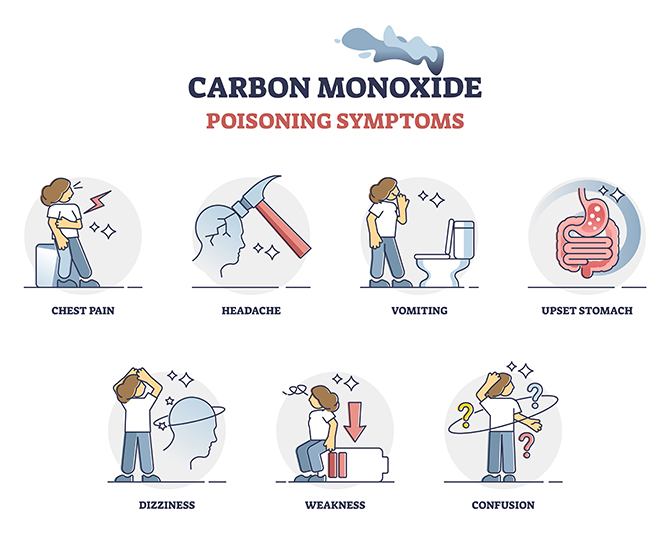The Dangers of Carbon Monoxide
Carbon monoxide (CO) poisoning is a hazard that puts many people at risk, especially workers. CO — often referred to as the silent killer — is an odorless, colorless, and tasteless gas that is harmful when breathed in because it displaces oxygen in the blood and deprives vital organs of that oxygen. It is created when fuels such as gasoline, wood, coal, propane, etc. do not fully burn when used in the equipment being fueled. Harmful levels of CO can be found in boiler rooms, warehouses, petroleum refineries, pulp and paper production areas, and steel production areas.
We also want to highlight the dangers of carbon monoxide when using generators and heating equipment. Any type of equipment that uses the fuels listed above are potential sources of carbon monoxide. Because of this, it’s vital to install and maintain carbon monoxide alarms in homes and offices.
OSHA offers the following tips to avoid CO poisoning in workplace and home settings:
- Install an effective ventilation system that will remove CO from work areas
- Maintain equipment and appliances that can produce CO in good working order to promote their safe operation and to reduce CO formation. Those appliances include generators, water heaters, space heaters, and cooking ranges
- Consider switching from gasoline-powered equipment to equipment powered by electricity, batteries, or compressed air — if it can be used safely
- Prohibit the use of gasoline-powered engines or tools in poorly ventilated areas
- Provide personal CO monitors with audible alarms if potential exposure to CO exists
- Test air regularly in areas where CO may be present, including confined spaces
- Use respirators with appropriate canisters, in conjunction with personal CO monitoring, for short periods under certain circumstances where CO levels are not exceedingly high
- Educate workers about the sources and conditions that may result in CO poisoning as well as the symptoms and control of CO exposure
If you suspect someone has been poisoned with CO, promptly move the victim to fresh air in an open area and call 911. Administer 100% oxygen using a tight-fitting mask if the victim is breathing. If they are not breathing, start CPR.
Warning: You may be exposed to fatal levels of CO poisoning in a rescue attempt. Rescuers should be skilled at performing recovery operations and using recovery equipment. Employers should make sure that rescuers are not exposed to dangerous CO levels when performing rescue operations.
For more information, visit OSHA’s fact sheet on carbon monoxide poisoning: https://www.osha.gov/.../pub.../carbonmonoxide-factsheet.pdf
Credit: OSHA
Learn more about HazTek Safety & OSHA Training.
